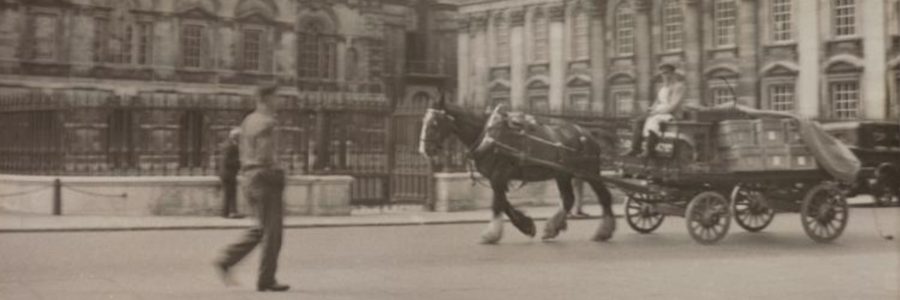
The Pilgrims’ tale: the box that moved the Library
Eighty-seven years ago today, on 22 October 1934, George V arrived in Cambridge to open the new University Library. It was a day of huge celebrations across the city. Schoolchildren were given a special holiday, shops were strewn with banners, flags and bunting, and cheering crowds lined the streets to watch the procession of the royal party from Cambridge Station to West Road. Proceedings at the Library were carefully orchestrated. A canopy was erected outside the main entrance and a route through the building was planned with precision.
Stationed at the north end of the corridor outside the Reading Room was a young member of staff, Robert Pilgrim. He was one of several stewards around the Library, instructed ‘to direct visitors to their places and to see that they do not go astray’. [1] His place was at some remove from the main action, however, and he would not have seen the ceremony that took place in the Reading Room or heard the King in his speech declare the new Library ‘a powerhouse and a testing station of educational activities … a workshop of new knowledge and a storehouse of seasoned wisdom’. [2]
Nevertheless, Robert Pilgrim left us an extraordinary legacy from this great moment in the history of the Library. From 1931 to 1935, he took a remarkable series of 144 photographs documenting the construction of Sir George Gilbert Scott’s new University Library and some scenes shortly after its completion, including images from the morning 22 October 1934, ahead of the arrival of the royal visitors. Pilgrim was given unrestricted site access during the build and the photographs are detailed and dizzying in their comprehensiveness and perspective, with shots taken high up amidst the scaffolding.
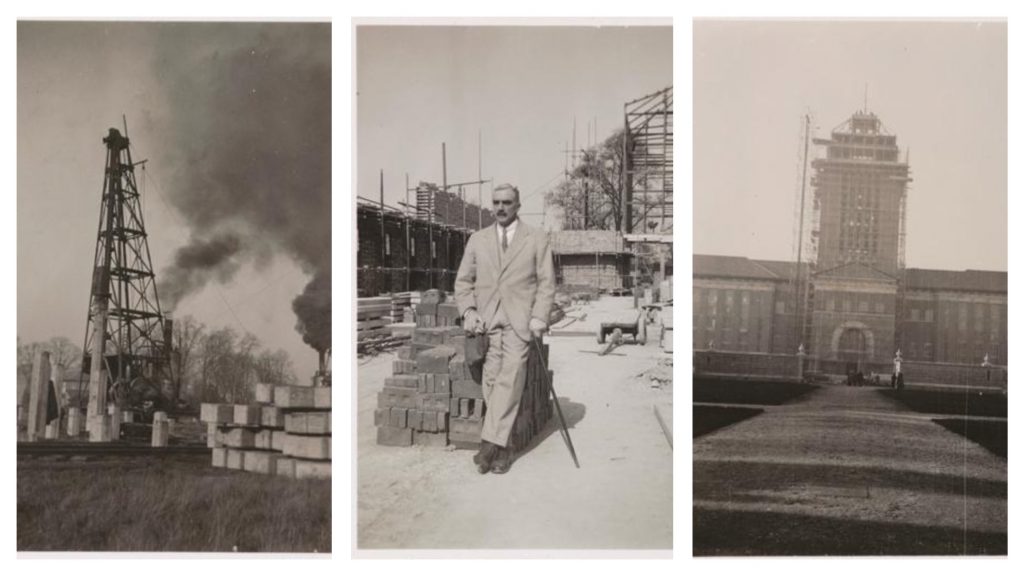
During July 1934, along with other members of staff, he also captured images of the move of books from the old library to the new. His photographs convey the excitement of the time – cricket played during a break, staff enjoying lollipops bought by the Librarian – but also its poignancy, with scenes of the empty rooms of the old Library and the last box of books to leave, being lowered through a window onto the waiting horse and cart below. Robert Pilgrim’s final photograph of the move (at the top of this page) shows ‘The last load’, 26 July 1934, an evocative image of horse and cart laden with boxes, travelling past the old University Library – the old world moving on to the new, the motion blur capturing a sense of the passing of time.
We were delighted recently to be able to connect back to this moment when Robert Pilgrim’s grandson Steve got in touch to let us know about a special item: one of the very boxes used during the move, kept by Robert and passed down through the family. The box had been put to good use over the years during family house moves – travelling from Cambridge to Saffron Walden to Weston-super-Mare – used, pleasingly, for books (of course), as a sticker marked ‘Books – bedroom’ shows. Last week we welcomed Steve to the Library for a special visit to present us with the box and to see the place where his grandfather had worked. He was following in the footsteps of his father as well as his grandfather, as his father had also visited in 2011 to present Robert Pilgrim’s photograph album documenting the construction of the Library.
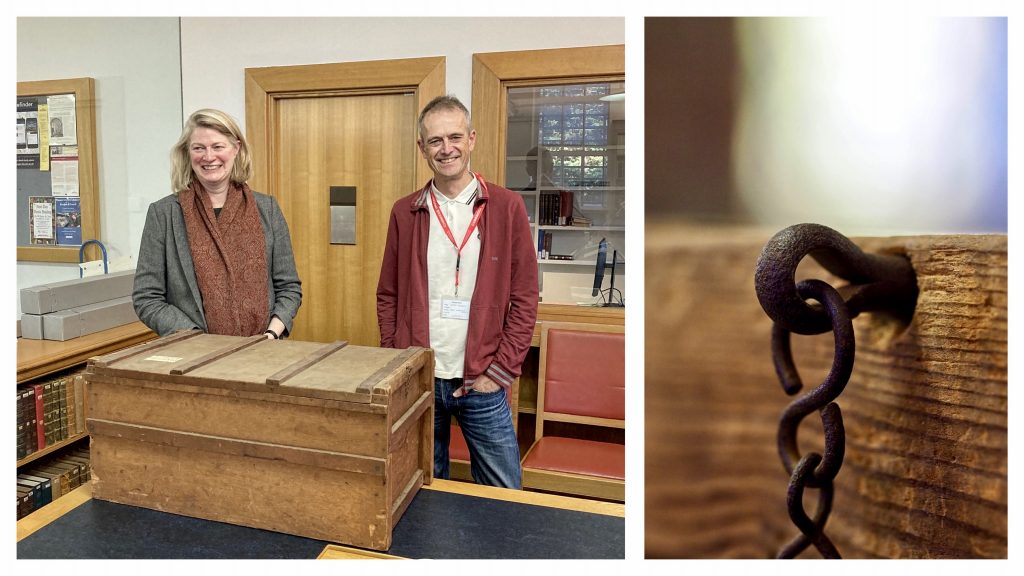
The box was one of 1,000 wooden crates built to a standard size for the Library by Papworth Industries, the manufacturing arm of Papworth Village Settlement, a Cambridgeshire colony for sufferers of tuberculosis where recovering patients were given paid work under medical supervision. Tiny metal pins on chains were used to attach the lid securely to the box. The boxes were packed, emptied and reused on different journeys from the old library to the new. At the time, the Library had around one-and-a-half million books, and 23,725 box-loads were required to complete the enormous task – ‘a task of extraordinary interest, especially as no undertaking of the kind has ever been seen in the Library world’. [3]
Robert Pilgrim also kept another memento of the Library, an amusingly strict ‘Notice to the Staff’ from 1901 signed by the Librarian Francis Jenkinson instructing that ‘This Room must not be used as a thoroughfare’. Pilgrim started his career in the Library in 1921 as a ‘Library Boy’, after leaving school at the age of fourteen – a junior member of staff who would fetch books for readers and help with other tasks. As well as being a keen photographer, he was also a talented artist. By the time he retired in 1956, after 35 years of service, he had risen to the role of Superintendent of the Anderson Room, then the reading room for the Library’s Special Collections, where he would have supervised readers using rare books, manuscripts and other valuable items.
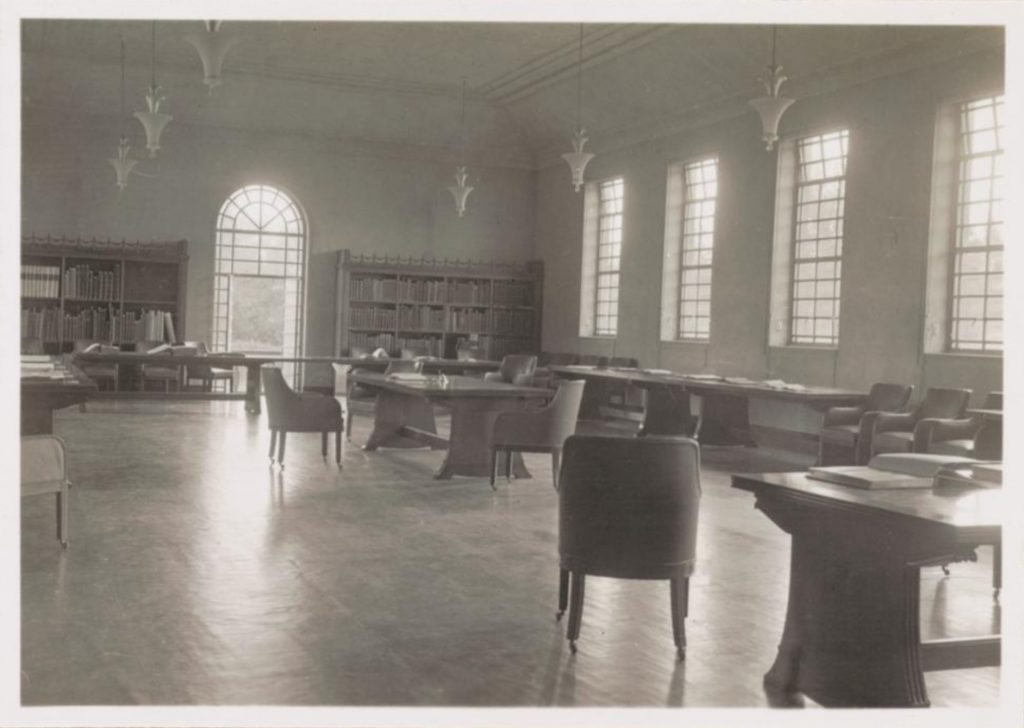
Photographs from the 1920s show him in his early years as a part of the Library staff, from a formal photograph taken in the Library courtyard in 1921, to a lovely image of him at a staff outing, sadly undated, but from around the same time. In a later photograph from 1948 he is outside the new University Library, part of a much expanded team of staff. The decision to build a new library had been taken in 1921, the same year Robert Pilgrim joined the staff, so he knew from the start what the future held. He served a remarkable thirteen years at the old Library, then a further twenty-two in the new building, but with service in the Second World War during that time.
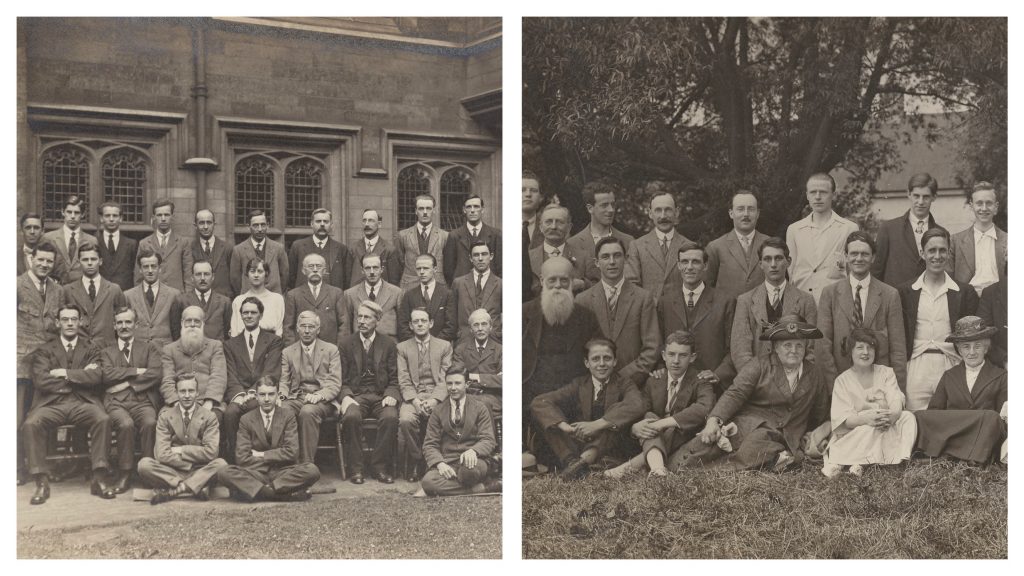
The history of the Library is usually told through its great collections, or through its prominent figures – the Librarians, benefactors, or architects. Yet libraries are places for all their people and the history of the library is equally the social history of those who use it and work for it, those stationed in the corridors outside the Reading Room as well as those taking their seats next to royal visitors. We will be forever grateful that Robert Pilgrim had the foresight to understand the importance of the moment he was living through for the history of the Library, to document it through his extraordinary photographs, and to hold on to a box that had moved the Library – as a useful object, no doubt, but perhaps also as a treasured memento of his place of work. We are hugely grateful as well to his grandson Steve for bringing the box back to the Library, eighty-seven years after it first arrived in the building.
Notes
[1] A. F. Scholfield, ‘Opening ceremony of October 22nd’ [note to staff], 3 October 1934, ULIB/6/5/9, item 485.
[2] The King’s speech was reproduced in various places, such as the supplement to the Cambridge Daily News, 22 October 1934.
[3] ‘Million book “move”: Cambridge firm’s task’, Cambridge Daily News, 29 March 1934.
